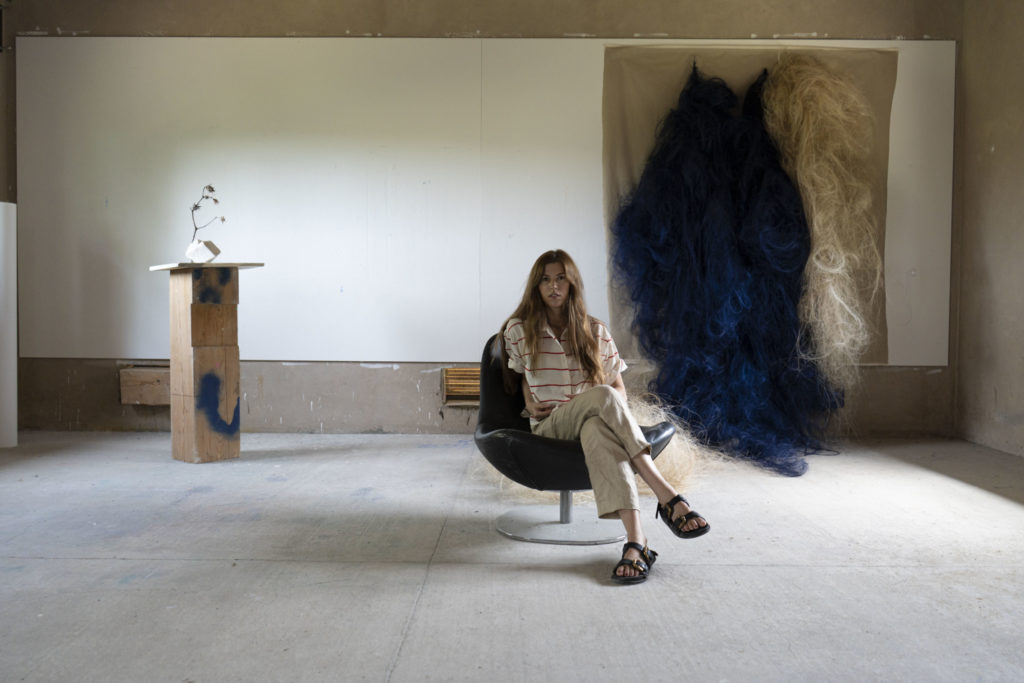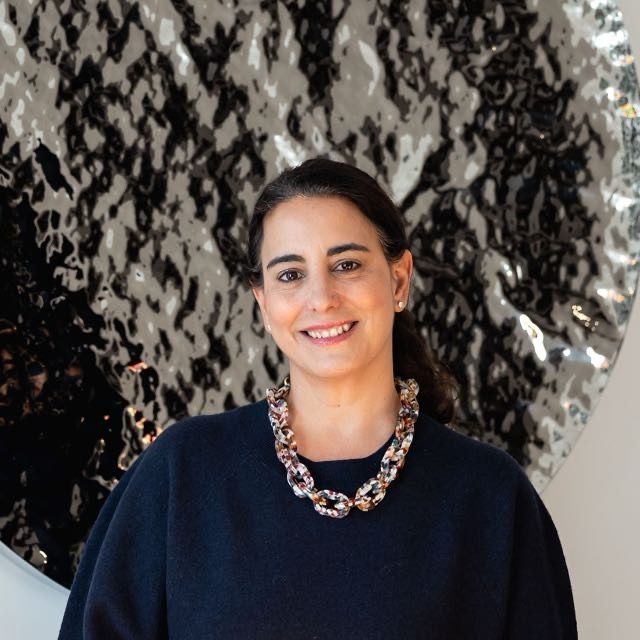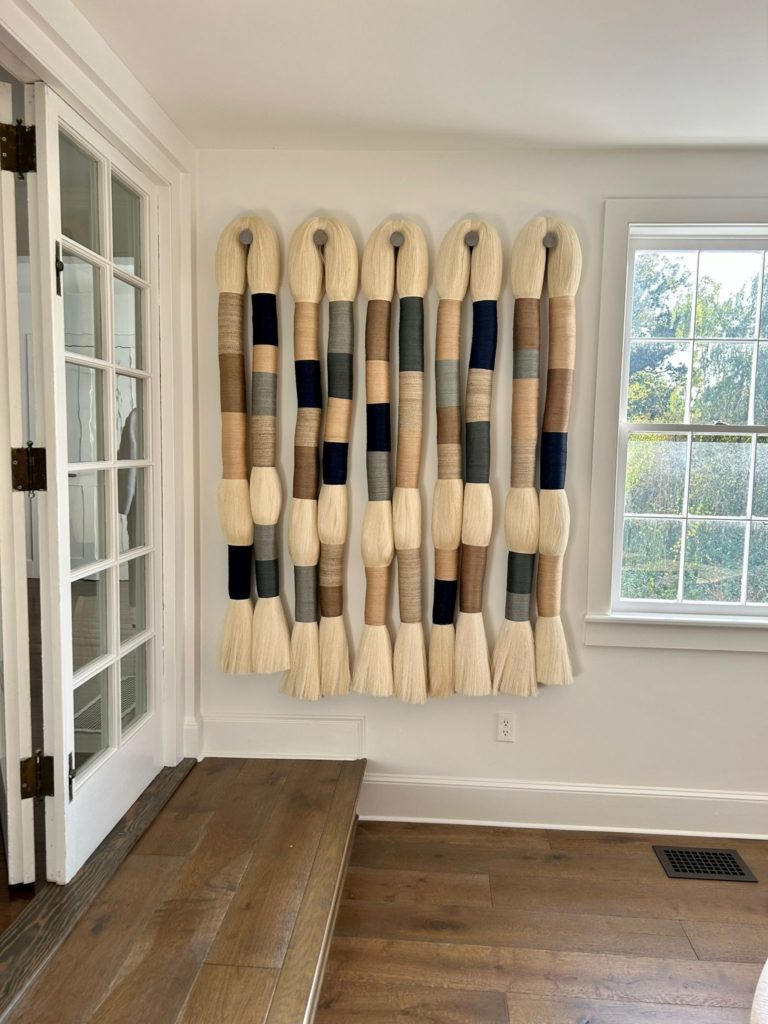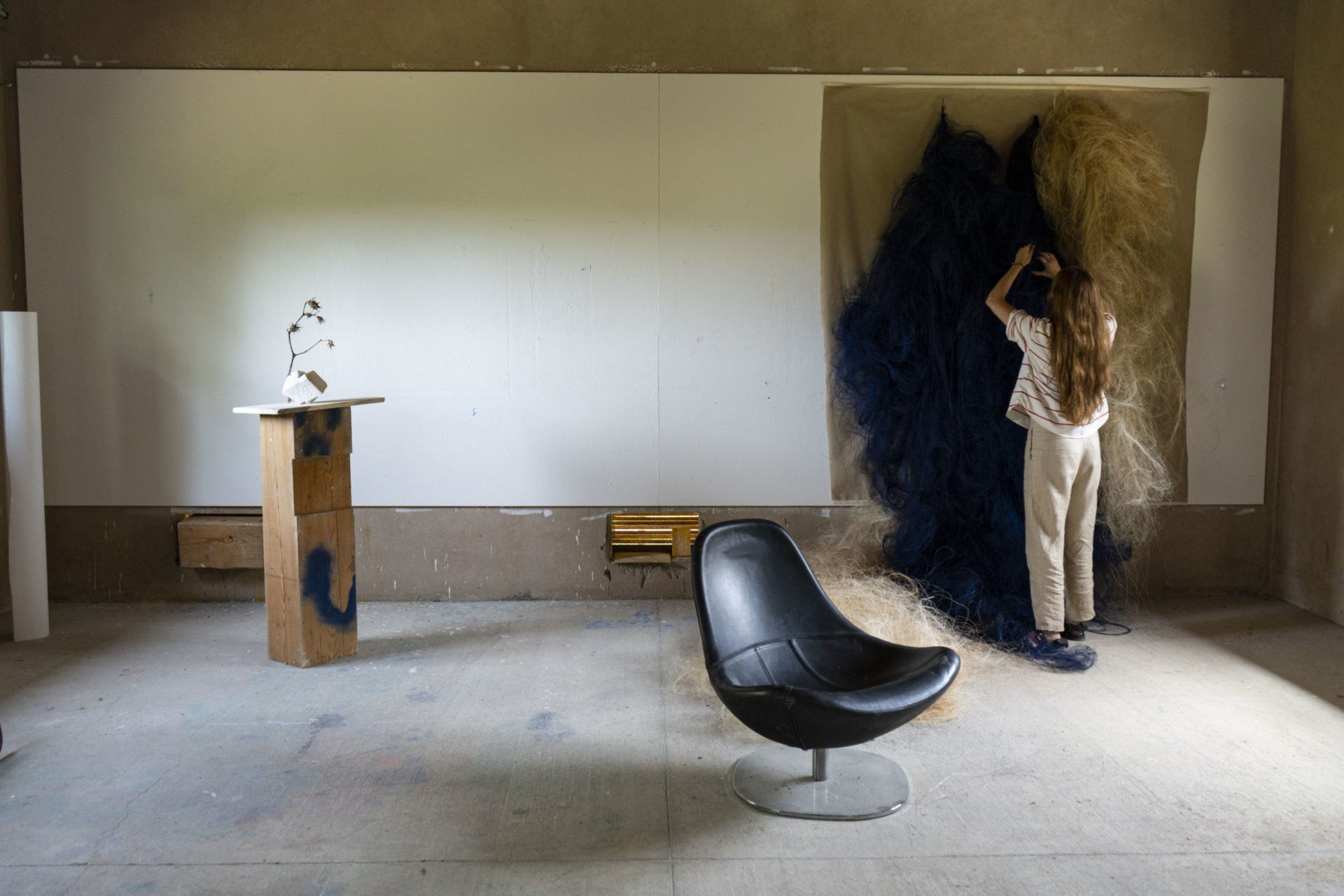The importance of providing meaningful and sustained support for artists
The Residency, from CURA Art, in partnership with Monpure London, is a platform focused on supporting and sponsoring underrepresented artists, centred around time away from their usual routines at various inspiring spaces. The Residency uses a unique approach, creating a supportive ecosystem through mentorship and community, while connecting artists with influential patrons as a catalyst for change.
Created in response to the growth of collecting with purpose – collectors identifying and valuing their role in supporting the arts – The Residency is part of a movement seeking to nourish the arts sector at a time when public funding for culture is being reduced. The aim is to create an accessible and international platform that nurtures artists and encourages a relationship with those that champion their work. The project reinforces CURA Art’s mission to promote collecting with purpose.
Annually, selected patrons sponsor their chosen artists to take part in a residency for one month, currently taking place at Villa Lena in the hills of Tuscany. Each artist has their own studio space to provide time and space for self-led projects, while the collaborative nature of the program involves talks, workshops, and other events to promote the exchange of ideas. Shaped by an evolving network of individuals committed to upholding creative freedom, The Residency keeps community, accessibility and compassion at its core.
The Residency unites artists from a variety of backgrounds, stages of careers, ages, mediums, and commitments. In its initial years, the program focuses on championing women-identifying artists, in response to data showing that only 13.7% of living artists represented in galleries in Europe and North America are women.

CURA Art Founders, Georgia Powell (left) and Liza Shapiro (right) // Photo Credit: Jayne West
2023 Edition
In 2023, project patron Stephanie Mannaseh supported artist Alejandra Aristizabal to spend the month of June at Villa Lena. Here, we share their insight about the project and experience. Alejandra Aristizabal, born in Manizales, Colombia in 1987, is a visual artist working with natural resources, predominantly with the natural fibre, Fique. She studied Visual Arts at the AI of Miami and a master in communication in IED Madrid. She says of her practice:
“From my place as an artist I wish to open conversations about nature, social narratives and manual traditions. I feel the need to be a part of this, aiming to connect and open an empathic visual space of communication and reflection. I believe in art with a purpose. Environmental purpose, social purpose and aesthetic purpose. I want to promote natural resources and materials, like Fique, the main material of my artistic work. I want to elevate autochthonous practices and native traditions, and people whose lives are sustained around the transformation of this plant. I want to give voice to crafters and rediscover manual practices. Through my art, I want to take you back to mother earth though a visually appealing journey.”

Artist Alejandra Aristizabal Studio at Villa Lena // Photo Credit: Camilla Fatticcioni
Stephanie Mannaseh is a consultant, art advisor and curator from Montreal, Canada. She earned her degree from McGill University and went on to study at Sotheby’s Institute and Goldsmiths University in London. In 2006, Stephanie founded the Accessible Art Fair (ACAF) offering unaffiliated artists an opportunity to exhibit and sell their work in a high-end art fair setting. In the corporate sector, Stephanie was responsible for developing and implementing the Art & Design Sessions for BMW in Belgium where she showcased artists such as Terry O’Neill and Mark Lagrange. Stephanie launched SM Art Advisory over 10 years ago offering her expertise to all types of clients from sourcing art to strategy consulting to concept creation and development.
In 2021, Stephanie was appointed as curator of the Sol Lewitt exhibition at the Jewish Museum of Belgium and is currently advising the Jewish Museum of Amsterdam on their Sol LeWitt exhibition which opened October 2023. She founded Berkshire House with her partner, sculptor Jonathan Prince in 2020. Berkshire House is a gathering space in the arts in rural Massachusetts, hosting events around art, music, gastronomy, and technology. Stephanie has two wonderful teenage daughters who she has been dragging to museums and art fairs since their birth.

Patron Stephanie Mannaseh
Alejandra & Stephanie: In conversation
Stephanie, how did you meet Alejandra?
Ale applied for the Accessible Art Fair and I was immediately struck by her work.
Stephanie, what was it about Alejandra’s work that interested you?
I find her practice really poetic, utilising a medium that is seldom used and working directly in a sustainable way with local farmers to create beautiful works in her studio.
Stephanie – why do you think she would be a good fit for this project?
I think a mix of her talent and positive attitude made her perfect for a residency. She has an open spirit and is always seems ready to grow.
Alejandra, why did you say yes?
Over the years, my relationship with Stephanie has deepened, and I have come to truly believe in her vision and intellect. When she presented me with the opportunity to be part of this project, it felt like a dream come true. The thought of being able to continue nurturing our relationship while also collaborating with other artists, creating art, and living in a magical place for a month was exciting. I couldn’t pass up such a beautiful opportunity to grow personally and creatively.
Alejandra, what was your time at Villa Lena like? Has it influenced your practise?
My time at Villa Lena was truly wonderful. As an artist whose work is deeply intertwined with nature, the opportunity to create, paint, and experiment with new materials in such a natural setting profoundly influenced my artistic practice. Interacting with artists from various mediums was incredibly fulfilling, and I hope that these connections will continue to flourish, opening up possibilities for future collaborations.
Alejandra, what did you learn from the project? How did it feel to have an advocate for your work like that?
Having someone who believes in me not just as an artist, but also as a person, is truly gratifying. While I have a deep passion for what I do, having someone who believes in my love for my craft is a constant source of encouragement. I am incredibly grateful to Stephanie for being my mentor on this journey. Her belief in me has been a guiding light, and I am thankful for her unwavering support.
Alejandra, Could you tell us about the work you gave to Stephanie?
My main material is fique, a natural fibre from Colombia. I wanted to create a piece that would serve as a connection between us, incorporating natural colours that reflect my aesthetic, as well as blues that hold a special significance for Stephanie.

Artwork by Alejandra Aristizabal at Berkshire House
Stephanie, what does it mean to you to support an artist through a project like this?
As I have gotten older, I have realised that I can offer so much in terms of mentorship and I feel that it is very valuable to offer my expertise and support for the next generation of artists. I have always made it my mission to support underrepresented talent and this is another way for me to do that.
Stephanie, tell us about how you will use the work by Alejandra in your collection to further promote her practice.
Her work is hanging prominently in our collection at Berkshire House. All our visitors and guests will have a chance to interact with the work. I will also be offering reading materials about the artist and the work for people to be able to follow up.
How do you hope your relationship will develop from this?
Alejandra: Stephanie and I have collaborated on special and diverse projects together. I would love for this collaboration to continue, as I am grateful for her connection with my work, my pieces, and my beliefs.
Stephanie: I am so glad to hear that collector Christian Levett purchased a work thanks to the tour The Residency team offered and his subsequent visit to Villa Lena. I hope to realise further exposure to Alejandra’s work.


